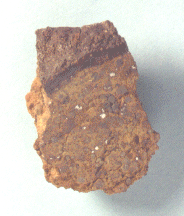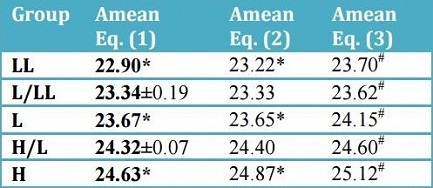L/LL4

Found April 1991
30° 35′ S., 125° 13′ E. When found in Western Australia, this meteoriteWork in progress. A solid natural object reaching a planet’s surface from interplanetary space. Solid portion of a meteoroid that survives its fall to Earth, or some other body. Meteorites are classified as stony meteorites, iron meteorites, and stony-iron meteorites. These groups are further divided according to their mineralogy and Click on Term to Read More was composed of several large fragments and four smaller pieces having a combined weight of 429 g. Seemore Downs might be a chemically extreme member of the L or LL ordinary chondriteWork in Progress Ordinary chondrites (OCs) are the largest meteorite clan, comprising approximately 87% of the global collection and 78% of all falls (Meteoritical Society database 2018)1. Meteorites & the Early Solar System: page 581 section 6.1 OC of type 5 or 6 with an apparent shock stage of S1, Click on Term to Read More groups, or it could be derived from its own unique parent bodyThe body from which a meteorite or meteoroid was derived prior to its ejection. Some parent bodies were destroyed early in the formation of our Solar System, while others like the asteroid 4-Vesta and Mars are still observable today. Click on Term to Read More with properties intermediate to, or overlapping with, both the L and the LL parent bodies.
Previous parameters used to delimit an L/LL group from the L and LL groups include the
siderophile elementLiterally, "iron-loving" element that tends to be concentrated in Fe-Ni metal rather than in silicate; these are Fe, Co, Ni, Mo, Re, Au, and PGE. These elements are relatively common in undifferentiated meteorites, and, in differentiated asteroids and planets, are found in the metal-rich cores and, consequently, extremely rare on concentrations, the
fayalitePure* iron end-member (Fe2SiO4) of the olivine solid solution series and an important mineral in meteorites. When iron (Fe) is completely substituted by magnesium, it yields the the pure Mg-olivine end-member, forsterite (Mg2SiO4). The various Fe and Mg substitutions between these two end-members are described based on their forsteritic (Fo) Click on Term to Read More content in
olivineGroup of silicate minerals, (Mg,Fe)2SiO4, with the compositional endpoints of forsterite (Mg2SiO4) and fayalite (Fe2SiO4). Olivine is commonly found in all chondrites within both the matrix and chondrules, achondrites including most primitive achondrites and some evolved achondrites, in pallasites as large yellow-green crystals (brown when terrestrialized), in the silicate portion Click on Term to Read More, and the cobalt concentration in
kamaciteMore common than taenite, both taenite and kamacite are Ni-Fe alloys found in iron meteorites. Kamacite, α-(Fe,Ni), contains 4-7.5 wt% Ni, and forms large body-centered cubic crystals that appear like broad bands or beam-like structures on the etched surface of a meteorite; its name is derived from the Greek word Click on Term to Read More. New studies utilizing cluster anaysis statistics on the minor and trace
elementSubstance composed of atoms, each of which has the same atomic number (Z) and chemical properties. The chemical properties of an element are determined by the arrangement of the electrons in the various shells (specified by their quantum number) that surround the nucleus. In a neutral atom, the number of Click on Term to Read More data conclude that the L/LL meteorites are chemically more closely related to each other than they are to either the L or LL group. Furthermore, the enriched
REEOften abbreviated as “REE”, these 16 elements include (preceded by their atomic numbers): 21 scandium (Sc), 39 Yttrium (Y) and the 14 elements that comprise the lanthanides excluding 61 Promethium, an extremely rare and radioactive element. These elements show closely related geochemical behaviors associated with their filled 4f atomic orbital. Click on Term to Read More concentration and the negative europium anomaly, which are found only in the L/LL meteorites, easily distinguishes them from the other groups (Friedrich and Lipschutz, 2001). Moreover, it was ascertained by Heck
et al. (2009) that the O-isotopic compositions and the major and minor elemental compositions overlap between the L and
LL chondriteOrdinary chondrites ("low Fe" / "low metal") with only 1 to 3% free metal. Their olivine is more Fe-rich than in the other ordinary chondrites (Fa27-32), implying that the LL types must have formed under more oxidizing conditions than their H or L cousins. Orthopyroxene compositions are also Fe-the rich Click on Term to Read More groups. Since these meteorites do not fit into either of these two groups, they provide evidence for the existence of a separate L/LL, low total-Fe, chondritic parent body. The gas-retention age distribution determined for a set of 12 L/LL
chondritesChondrites are the most common meteorites accounting for ~84% of falls. Chondrites are comprised mostly of Fe- and Mg-bearing silicate minerals (found in both chondrules and fine grained matrix), reduced Fe/Ni metal (found in various states like large blebs, small grains and/or even chondrule rims), and various refractory inclusions (such Click on Term to Read More by Wasson and Wang (1991) revealed a different age range for each L, LL, and L/LL group. This suggests that meteorites from these
chondriteChondrites are the most common meteorites accounting for ~84% of falls. Chondrites are comprised mostly of Fe- and Mg-bearing silicate minerals (found in both chondrules and fine grained matrix), reduced Fe/Ni metal (found in various states like large blebs, small grains and/or even chondrule rims), and various refractory inclusions (such Click on Term to Read More groups originated from at least three separate parent bodies. At the close of 2009, the Meteoritical Bulletin Database has listed 102 meteorites classified as members of the L/LL group, although a portion of these could reflect an inability of the classifier to adequately distinguish between the L and LL groups.
It was demonstrated by Szurgot (2016) that the mean
atomic weightMass of a neutral atom of a nuclide - also called "atomic weight." The atomic weight of an element is the weighted average of each isotope. Click on Term to Read More (
Amean) of meteorites can be used to resolve the OC groups, including the intermediate groups L/LL and H/L.
Amean values can also be predicted through various equations based on other parameters such as atomic
Fe/Si ratio, grain
densityMass of an object divided by its volume. Density is a characteristic property of a substance (rock vs. ice, e.g.). Some substances (like gases) are easily compressible and have different densities depending on how much pressure is exerted upon them. The Sun is composed of compressible gases and is much Click on Term to Read More, and magnetic susceptibility, and these
Amean values all consistently resolve these groups into the ordered sequence LL < L/LL < L < H/L < H. Furthermore, it was demonstrated that
Amean values are lower for unequilibrated type 3 samples than for equilibrated samples within each OC group due to the presence of water;
Amean values for petrologic types 4–6 are indistinguishable within each group.

Diagram credit: M. Szurgot, 47th LPSC,
#2180 (2016)
Amean based on chemical composition (Eq. 1),
Fe/Si atomic ratio (Eq. 2), and grain density (Eq. 3) Other members of this intermediate chondrite group include L/LL3 Inman, L/LL4 Bjurböle, L/LL5 Knyahinya, and L/LL6 Naryilco. The specimen of Seemore Downs 001 shown above is an 8.9 g partially crusted fragment.








